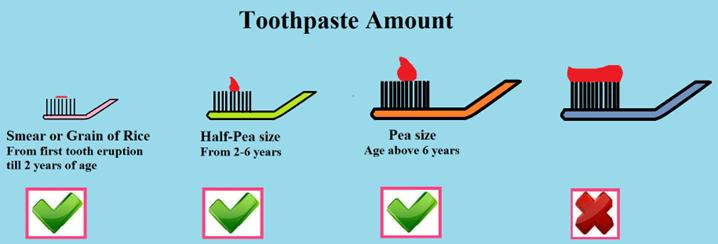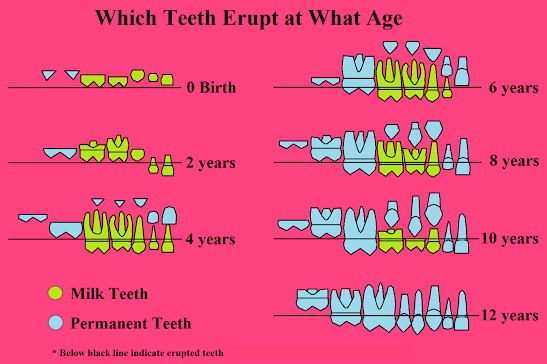Tips for Choosing and Using Toothpaste to Achieve a Healthy, Brighter Smile
Good oral health not only boosts overall health but also enhance your smile and confidence. Taking care of your teeth and gums is crucial to maintaining good oral health. Toothpaste is one of the essential items in your oral care arsenals. However, with so many toothpaste choices available in the market, choosing the right one can be challenging. In this article, we’ll guide you through everything you need to know about toothpaste and help you choose the best one and how to use it correctly for your oral as well as overall health.
What is toothpaste?
Toothpaste is a substance used for cleaning teeth, and helps preventing dental decay and gum disease, and freshening breath. It typically contains active ingredients such as fluoride, abrasive agents, humectants, and flavoring agents. Toothpaste is used by applying it onto a toothbrush and brushing the teeth in an up-down and circular motion.
Types of toothpaste
Toothpaste comes in various forms, such as paste, gel, and powder. It also contains different ingredients that target specific oral health problems. Here are some of the most common types of toothpaste available in the market.
- Fluoride Toothpaste: Fluoride is a natural mineral found in water and certain foods that helps prevent tooth decay by strengthening tooth enamel. Almost all toothpaste contains fluoride, but content levels may vary between different formulations.
- Whitening Toothpaste: These toothpastes are formulated to remove surface (external) stains caused by external factors such as tobacco and coffee, and bring teeth back to their natural color, but it cannot alter natural color or remove internal discoloration of teeth. They often contain active ingredients such as mild abrasives, hydrogen peroxide or baking soda.
- Anti-cavity toothpaste: These toothpastes contain higher levels of fluoride and formulated to prevent tooth decay and cavities. The fluoride helps to strengthen tooth’s outer layer i.e., enamel and cementum, and prevent tooth decay by remineralizing weakened areas of these layers.
- Tarter Control Toothpaste: These toothpastes typically contain additional ingredients such as pyrophosphates and zinc citrate, which help prevent the buildup of tarter on your teeth. This toothpaste is generally considered safe to use for most people. However, some individuals may experience side effects such as tooth sensitivity, gums irritation, or allergic reaction to certain ingredients in toothpaste.
- De-sensitizing Toothpaste: Sensitivity toothpaste works by blocking the exposed nerve endings caused from the wear of the tooth’s outer coating, reducing tooth sensitivity to hot, cold, or sweet food and drinks. This toothpaste typically contains ingredients such as potassium nitrate or stannous fluoride, which help block exposed nerves and reduce sensitivity. Other common ingredients include fluoride for cavity protection, and flavoring agents.
- Anti-Bad Breath Toothpaste: It typically contains antibacterial agents to reduce odor-causing bacteria in your mouth. Long-term use of anti-bad breath toothpaste may lead to bacterial resistance, so it’s advisable to consult with your dentist before use.
- Organic Toothpaste: It typically contains natural ingredients and avoid synthetic ingredients such as sodium lauryl sulfate and parabens, as well as artificial colors, flavors, sweeteners, and preservatives.
Is toothpaste really necessary?
Proper brushing technique is more important and toothpaste is not strictly necessary to clean the teeth. However, studies have shown that brushing with toothpaste is more effective at removing plaque and preventing tooth decay than brushing without it.
There is currently no significant evidence indicating that the recommended quantity of toothpaste ingredients has harmful effects on the body. However, ingesting large amount of toothpaste can be toxic. The fluoride in toothpaste is safe and approved by the most dental associations, and food and drug administrations (FDA) in an appropriate FDA-approved amount.
Toothpaste contains active ingredients such as fluoride that help to prevent tooth decay and strengthen tooth enamel. The abrasive agents in toothpaste also helps to remove surface stains and plaque from the teeth. Furthermore, the flavoring agents in toothpaste help to freshen breath and make brushing a more pleasant experience.
Studies have shown that brushing with toothpaste twice a day for two minutes each is an effective way to maintain good oral health and prevent dental problems such as cavities, gum disease, and bad breath. That’s why, toothpaste is highly recommended as part of a good oral hygiene routine.
Choosing the Right Toothpaste
It is necessary to choose a toothpaste that is appropriate for your specific oral health needs, such as toothpaste formulated for cavity prevention or sensitivity control toothpaste.
On other hand, if you have surface stains caused by external factors such as tobacco, coffee etc., toothpaste with mild abrasives and hydrogen peroxide may help to whiten your teeth. However, it is important to use such toothpaste for short period of time as it can cause abrasion and erosion of your teeth.
Tarter or stain removal toothpaste may be more abrasive than regular toothpaste, which could cause tooth abrasion and sensitivity if used excessively or aggressively. Furthermore, these types of toothpaste may not be suitable for people with teeth wear or sensitivity. So, it’s always best to seek professional advice and follow the usage guidelines.
Similarly, if you have tooth-sensitivity and your problem is resolved with the use of sensitivity control toothpaste, you do not have to continue using the same toothpaste, as it can be costlier. However, it is important to adopt preventive measures consistently to avoid future occurrence of sensitivity. Therefore, it is always recommended to discuss with your dentist first to ensure that you choose the right toothpaste for your specific needs.
It’s very important to check that the toothpaste you choose has received the seal of approval from your country’s dental association or FDA. The dental association or FDA evaluates toothpaste based on its effectiveness and safety. Toothpaste with the seal of approval means it’s safe and effective for oral as well as overall health.
It is generally recommended to select a toothpaste with a Relative Dentin Abrasivity (RDA) of 250 or less, as this indicates a lower abrasiveness level that is gentler on tooth and gums. The RDA is a measurement of the abrasiveness of a toothpaste. Its value is measured on a scale from 0 to 250, with lower values indicating less abrasiveness and higher values indicating more abrasiveness.
It is advisable to refrain from using teeth cleaning powder or teeth cleaning strips as they can excessively abrasive, which may lead to teeth wear and gum recession. Moreover, certain strips also consist of hydrogen peroxide which can lead to erosion of teeth.
Using expensive medicated toothpastes, such as those for bleeding gums or bad breath, or tooth sensitivity, as a regular toothpaste may only provide temporary relief of symptoms but not cure the underlying condition. These types of toothpastes are typically recommended for short-term use rather than regular, everyday use. It is important consult with your dentist to properly diagnose and treat the underlying cause of the problems, rather than relying solely on these toothpastes as part of your daily oral care routine.
If you experience rashes around your lips or sores inside your mouth, it is possible that you may be allergic to certain ingredients of toothpaste such as flavors, preservatives, colors, or detergents. Using organic toothpaste can be helpful as it contains natural ingredients that are less likely to cause allergic reactions. However, it is always best to consult your dentist for personalized recommendations.
Fluoride content and safe usage in toothpaste
The fluoride content in toothpaste varies among different brands and types. However, according to the American Dental Association (ADA) the recommended fluoride content in toothpaste should be as follow:
- Toothpaste for adults with 1000-1500 ppm of fluoride.
- Children between 3-6 years old can use toothpaste with 1000-1500 ppm of fluoride under adult supervision.
- Toothpaste for children under 3 years old should have no more than 1000 ppm of fluoride.
It is recommended for parents to brush the teeth of their child below the age of 3 years and to continue to assist with brushing until the child is able to properly brush their teeth themselves, usually around age of 6 or 7 years.
Important Instruction for Using Toothpaste Effectively:
- It is important to follow the instructions on the toothpaste label and use only the recommended amount. For adults, a pea-sized amount is usually sufficient. Children should use a small amount of toothpaste on their brush as shown in image.
The correct toothpaste amount - It is important not to swallow toothpaste, as large amounts of toothpaste ingredients or fluoride can be toxic.
- Brush your teeth using proper brushing technique for two minutes twice a day.
- Rinse thoroughly after brushing and avoid eating or drinking for at least 30 minutes afterwards to allow fluoride to work effectively. Rinse your mouth with water after completing your oral hygiene routine to remove any leftover toothpaste and debris. There’s a debate on whether it is advisable to rinse after using fluoride toothpaste. Some argue that it reduces the effectiveness of fluoride, while others are concerned about fluoride ingestion.
You have two options, and both of them are supported by scientific evidences to demonstrate their effectiveness and safety:
Option 1: Spit the toothpaste out after brushing, but don’t rinse your mouth with water immediately after brushing for at least 30 minutes to allow the fluoride work on your teeth, especially for those at a higher risk of developing cavities or those who consume sugary or acidic foods or drinks.
Option 2: Rinsing thoroughly after brushing and avoiding eating or drinking for at least 30 minutes allows the fluoride to work on the teeth without being washed away immediately and also removes excess toothpaste from your mouth.
However, some studies have shown that rinsing after brushing has no significant impact on the effectiveness of brushing with a fluoride toothpaste. It is important to follow the instructions on the toothpaste label and use only the recommended amount. If you have any doubts about using fluoride toothpaste, it is best to consult with your dentist.
- Replace your toothbrush every three to four months or when the bristles start to fray.
Conclusion
Choosing the right toothpaste is crucial for maintaining good oral health as well as overall well-being. Here are the concluded tips for choosing and using the toothpaste effectively:
- Choose toothpaste based on your specific dental needs, such as cavity, sensitivity or tarter control.
- If you don’t have specific needs, choose fluoride-containing toothpaste with a low Relative Dentin Abrasivity (RDA) value. This will effectively clean your teeth while also preventing damage to your teeth and gums.
- Always check for the seal of approval from reputable organizations like the Food and Drug Administrations or your country’s Dental Association.
- Follow the instructions on the toothpaste packaging and use only the recommended amount.
- Remember that choosing the right toothpaste is not enough. It should be used with the right toothbrush and proper brushing technique, along with regular oral hygiene routines.
- Brush your teeth for two minutes twice a day and replace your toothbrush regularly.
- Assist and supervise children with brushing to ensure they do it effectively and avoid swallowing toothpaste.
- Do not continue using expensive toothpaste for specific problems, such as bleeding gums, bad breath, sensitivity or stained teeth, without addressing the underlying cause.
It is always best to consult dental professionals before taking any actions. All you need is to start early and practice consistently. With these tips, you will have healthy mouth and healthy life.





